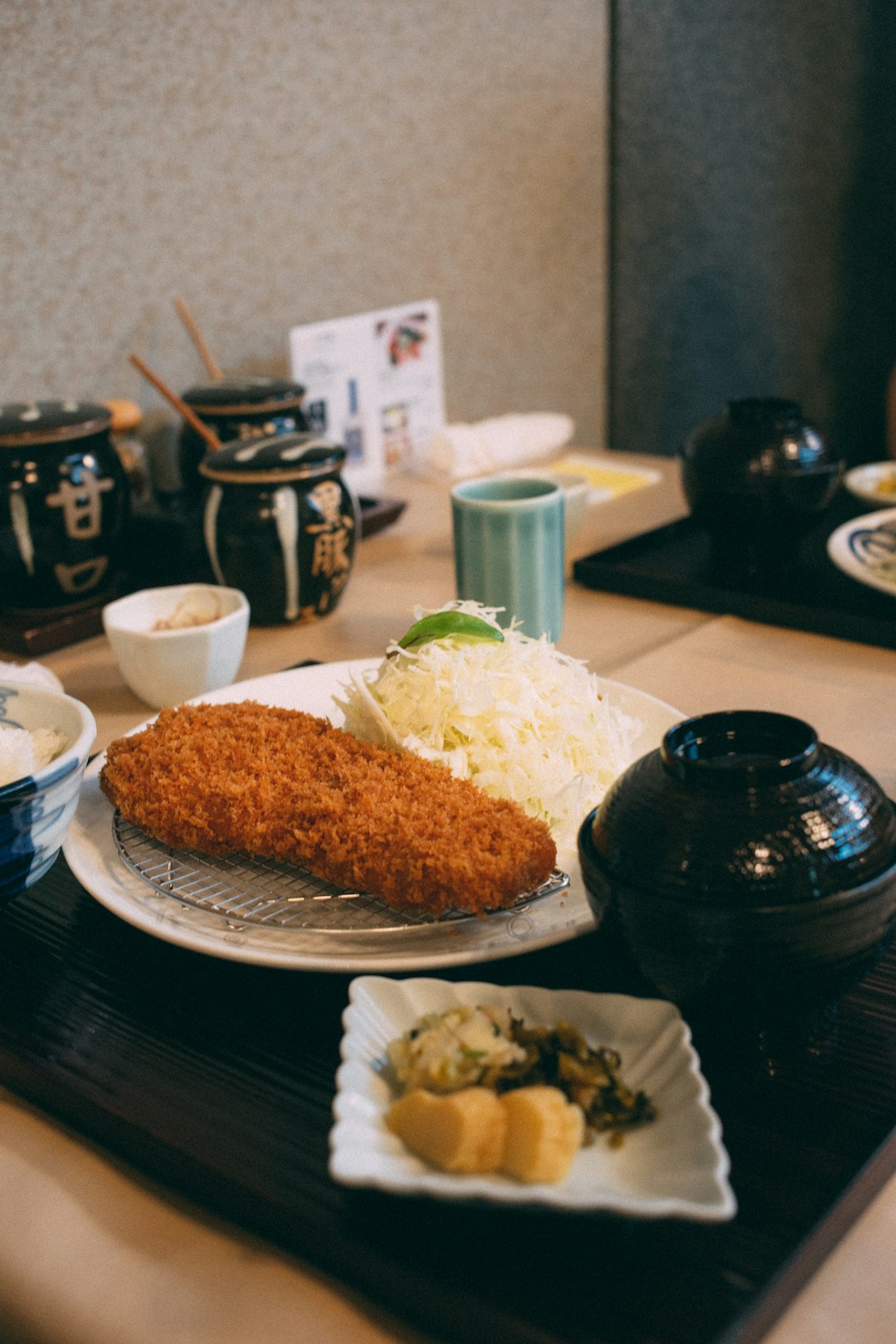Tonkatsu
The first step in the preparation of tonkatsu involves coating the cutlets in panko breadcrumbs, which creates a crunchy exterior that provides a pleasing contrast to the juicy meat. After the pork has been battered, it is then plunged into a hot fryer and cooked to golden perfection. The result is a crunchy, yet tender cutlet encased in a crunchy outer layer.
Once the tonkatsu is finished cooking, it is served with a side of shredded cabbage, topped with the traditional tonkatsu sauce. This sauce is made from a mixture of Worcestershire sauce, tomato ketchup, and onion, and provides an umami-packed punch to the dish. It is the perfect complement to the crisp and juicy pork, creating a flavor balance that just can't be beat.
Reminiscent of other Asian fried dishes like tempura, tonkatsu is a testament to the ingenuity of Japanese cuisine. Its simple yet flavorful preparation speaks to its timeless appeal. If you're looking to take your culinary palate on a journey through Japan, this dish is certainly worth trying!
Tonkatsu recipes
Amazing Tonkatsu recipes sourced from the web.
The origin of Tonkatsu
Tonkatsu, a classic Japanese dish comprised of a deep-fried pork cutlet, has captivated peoples’ hearts for generations. The crispy exterior and tender, juicy interior of this dish make it hard to resist. What is the true origin of this beloved meal?
This sumptuous dish allegedly first entered the culinary scene of Japan in the late 19th century. Its emergence coincided with the opening of the country to international trade and the Western world, meaning that several elements of the dish have a distinct European flavor.
It is believed that tonkatsu draws its inspiration from the European cuisine of schnitzel, which typically consists of a flattened, breaded cutlet of veal or chicken. Local cooks in Japan unsurprisingly made some tweaks to this dish, using pork instead and deep frying the cutlets instead of shallow frying them as is done with schnitzel.
The name of the dish itself is quite telling, as “ton” comes from the English word “pork” and “katsu” from the German “schnitzel.” This lends itself to the notion of tonkatsu being an amalgamation of the Japanese and Western cooking styles.
As tonkatsu grew in popularity, so too did other variations of the dish, such as “katsu” dishes made with chicken and beef. There are now plenty of innovative takes on this classic, including toppings, new sauces, and even some vegetarian versions.
Although the exact origins of tonkatsu remain murky, this scrumptious dish continues to be a staple of many Japanese meals – a testament to its enduring appeal.
Types of Tonkatsu
Have you ever heard of Tonkatsu? If you haven’t, you’re missing out! This revered Japanese dish is a delectable way to enjoy pork tenderloin. The dish originally began as a Western-style pork cutlet, featuring deep fried pork covered in breadcrumbs. However, throughout the years, chefs have experimented with different ingredients and methods to make Tonkatsu even tastier.
In its most basic form, Tonkatsu consists of lightly salted pork, typically served with shredded cabbage and a side of Tonkatsu sauce. But don’t be fooled by this simple description - Tonkatsu can be dressed up in many inventive ways. The most popular varieties include: Katsu Curry, made with curry sauce; Shio Katsu, made with soy sauce and fresh herbs; and Rosu Katsu, which has a crispy, crumbly coating made from panko breadcrumbs.
Not only does Tonkatsu come in different forms, it can also be prepared with different cuts of pork. One of the most classic cuts is hire-katsu, featuring a thick-cut pork loin marinated in a savory sauce. Other variations include filet mignon (filet katsu), tenderloin (hirekatsu), and boneless shoulder (sara katsu).
Vegetarians and vegans can join in the Tonkatsu party, too! Thanks to the growing demand for plant-based dishes, some restaurants are now offering “vege-katsu.” Some other inventive variations include shiitake mushroom, eggplant, and tofu Tonkatsu.
Just like other traditional dishes, Tonkatsu can be served in many ways. Typically, it’s served on a plate of shredded cabbage, sometimes accompanied by a bowl of steamed rice or noodles. Some restaurants may also serve it in a bento box, an all-in-one meal containing several side dishes.
No matter how you serve it, one thing is for sure - Tonkatsu is a scrumptious and versatile dish, sure to please everyone around the dinner table. Whether you choose your pork pinkish-white, savory-sweet, or crispy-crunchy, you’re sure to savor every bite of your Tonkatsu.



